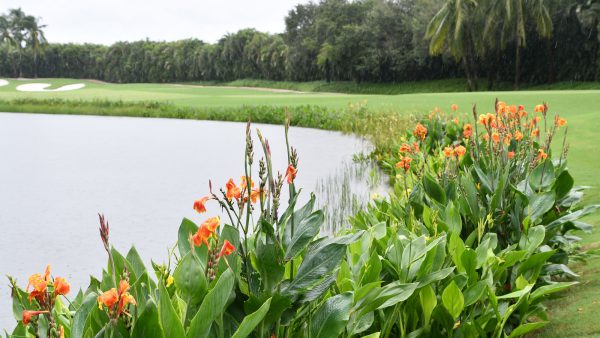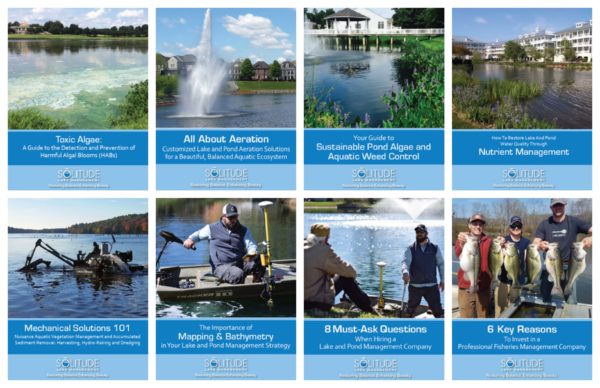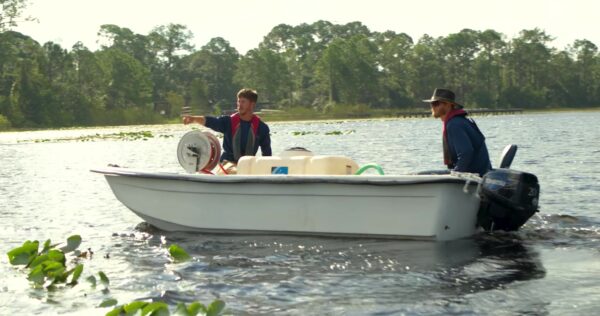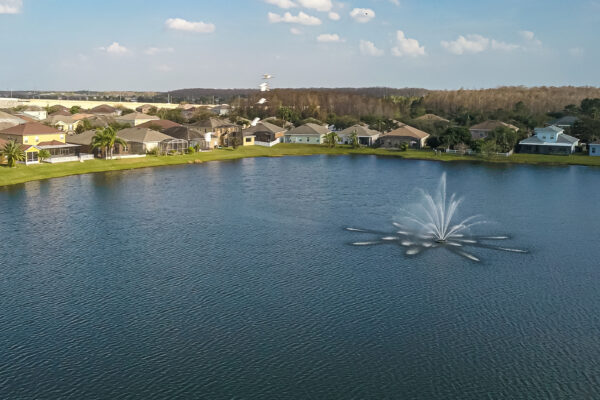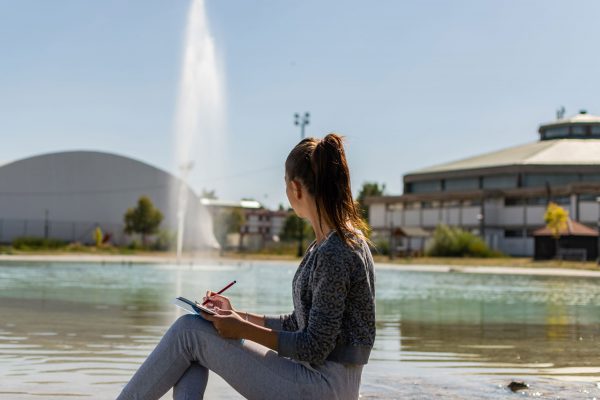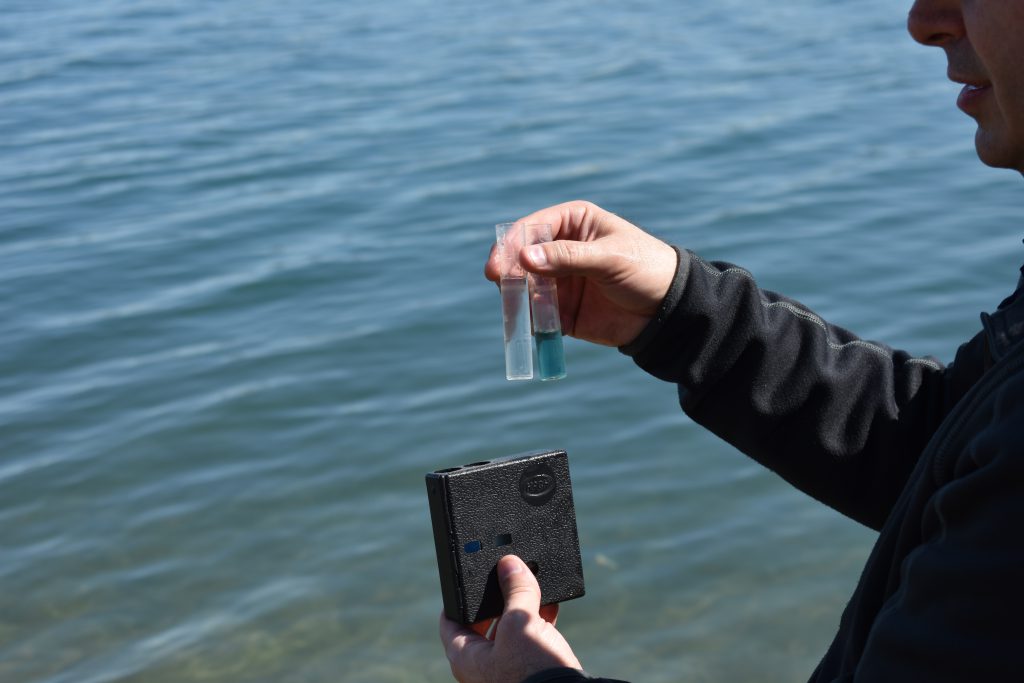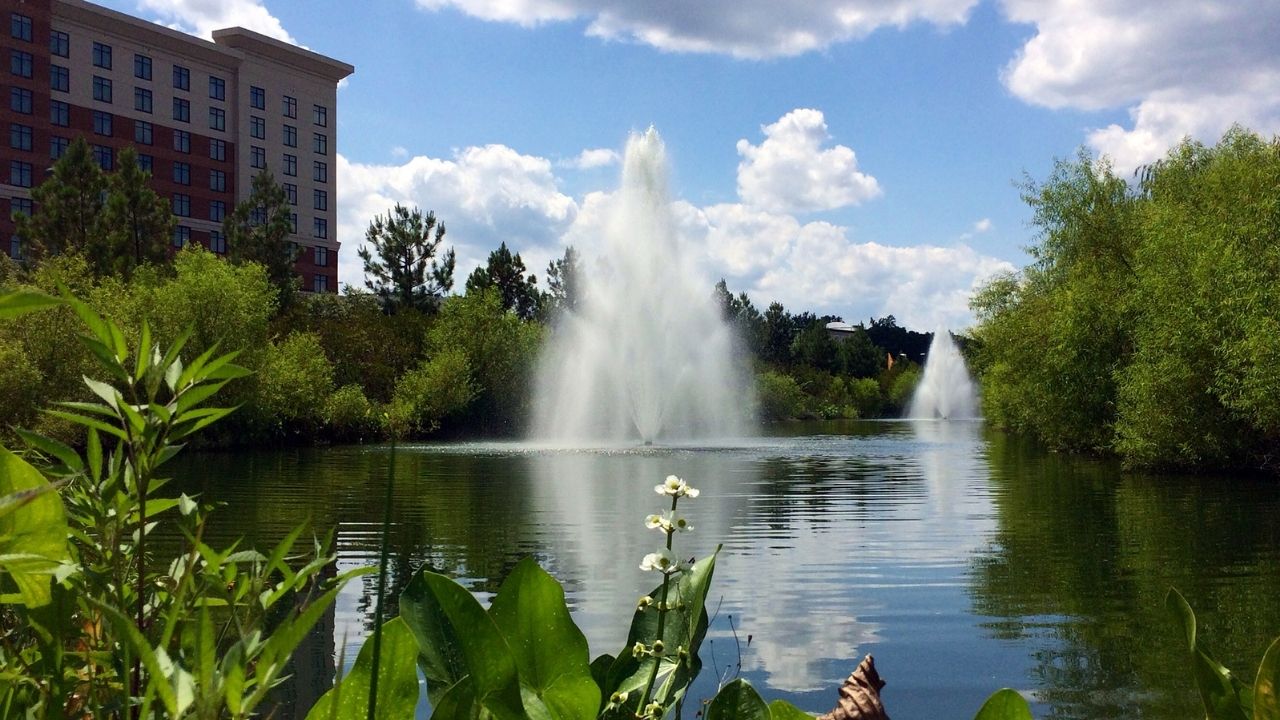
Do I have biofilm, pollen or algae in my pond?
Have you ever noticed a clear, scummy, or iridescent film on the surface of a pond or lake? This phenomenon, known as a “biofilm,” is often mistaken for an algae bloom or oil spill, and can be quite alarming when it shows up in their waterbodies. Along with biofilm, pollen is often mistaken for an algal bloom and can raise concerns.
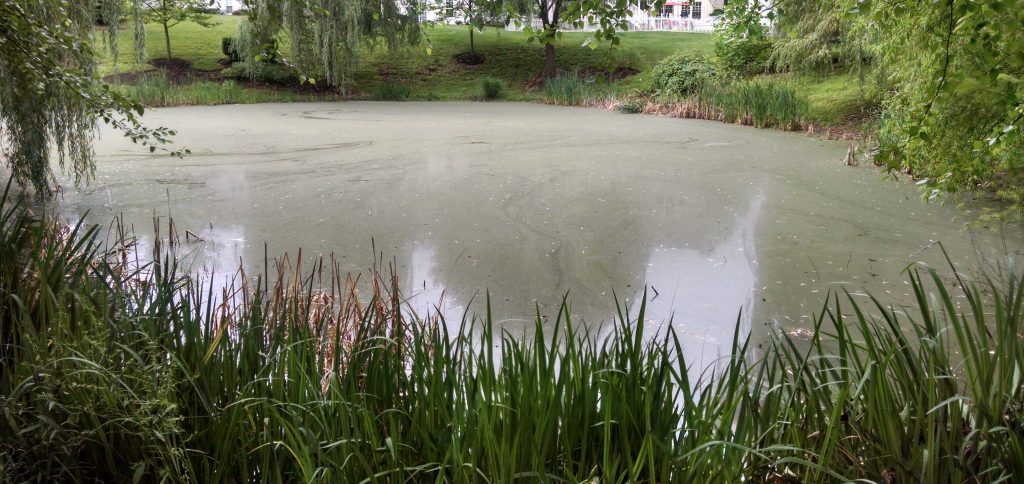
What are biofilms?
Surface biofilms are not caused by either algae or hydrocarbons – they are produced by bacteria in the presence of large amounts of decaying plant or animal life. Biofilms form on the surface of the water when algae or metazoan (animal) life dies at a rate faster than the naturally occurring bacteria can degrade it. The films can be classified as either dead algae scums or dead protozoan scums, and they become worse during the summer months when water temperatures exceed 76° F. The effect of precipitation on biofilms is inconsistent – they can be worse in times of very little or excessive rainfall, and this seems to vary geographically. Biofilms also seem to be worse in waterbodies with low pH. In general, biofilms are a sign that a pond has poor water quality and is out of balance.
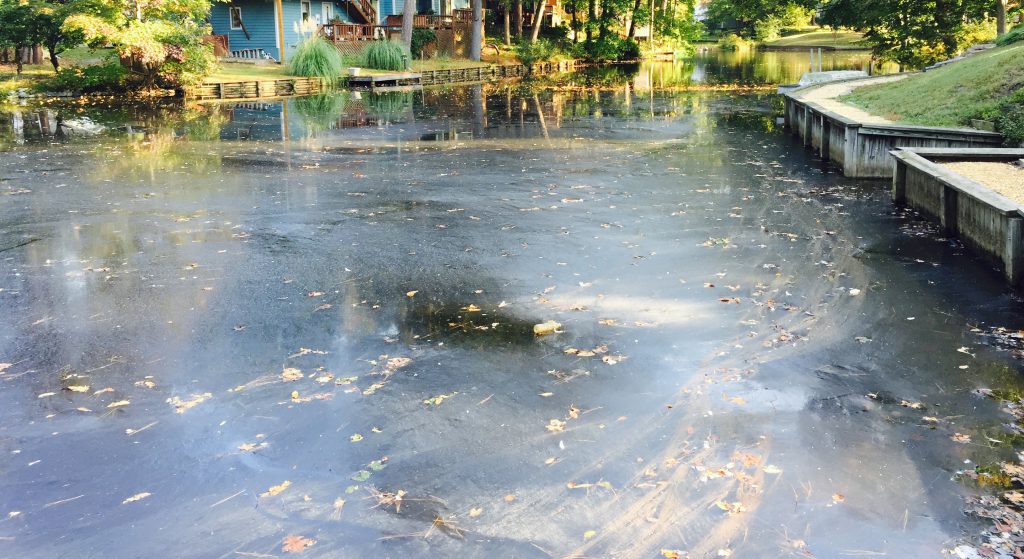
How can you get rid of biofilms?
It can be very difficult to gain control of biofilm issues when they develop. Biofilms can be extremely elusive and may show up in the afternoon when the pond is clear in the morning, and then may dissipate again overnight. Raising the pH of the water by the addition of soda ash or lime may provide good control of biofilms, and there are a few beneficial bacteria and enzyme products that may be effective. Each time this problem presents itself, a comprehensive water quality test should be conducted to target the root cause of the biofilm’s development.
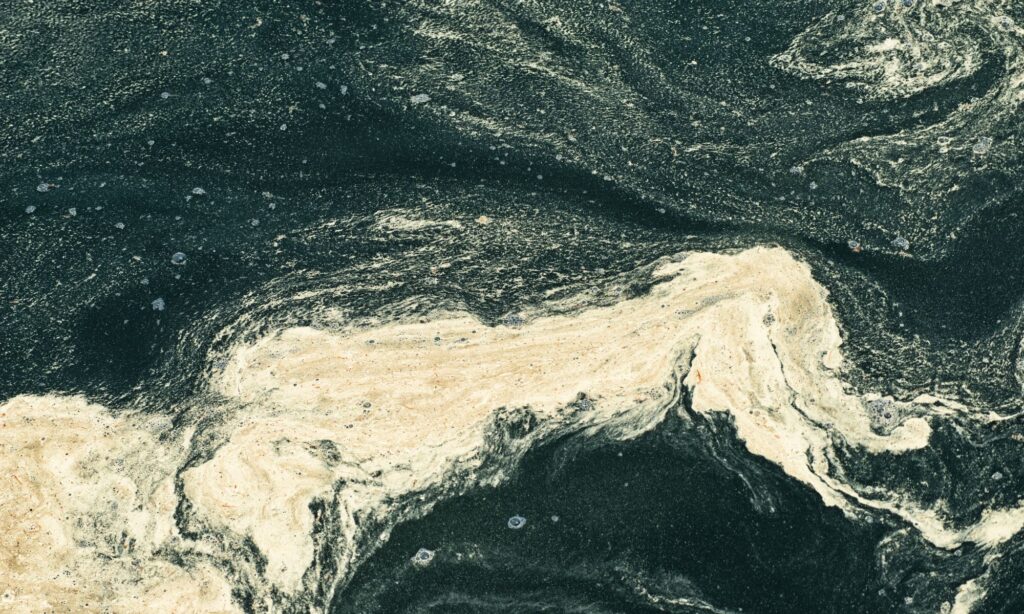
What if there's pollen collecting on my pond's surface?
During the spring, it’s common to see pollen collecting on your pond’s surface. Pollen build-up typically won’t harm your water quality. However, if an excessive amount of pollen accumulates, it will begin to break down and release nutrients such as nitrogen and phosphorus. When excess levels of nitrogen and phosphorous are present, water quality issues like algal blooms and aquatic weeds can develop. The best way to limit nuisance growth is by maintaining balanced water quality.
Find out what's in your pond...
Are you still wondering how to tell if the scum on your pond is an oil slick, algae bloom, pollen, or biofilm? A quick test to see if the scum is caused by a hydrocarbon-based oil is to grab a stick and poke it into the film. An oil slick will swirl back on itself in the wake of the stick, whereas a biofilm and pollen will fracture into small pieces that remain separated.
To find out what exactly is floating in your pond, collect a water sample for examination under a microscope to identify the different species of algae and protozoans present in the water, as well as to measure the baseline water chemistry parameters. Once we have some basic information, the SOLitude team of biologists and ecologists can help you develop a site-specific water quality improvement program to remediate whatever is ailing your waterbody.
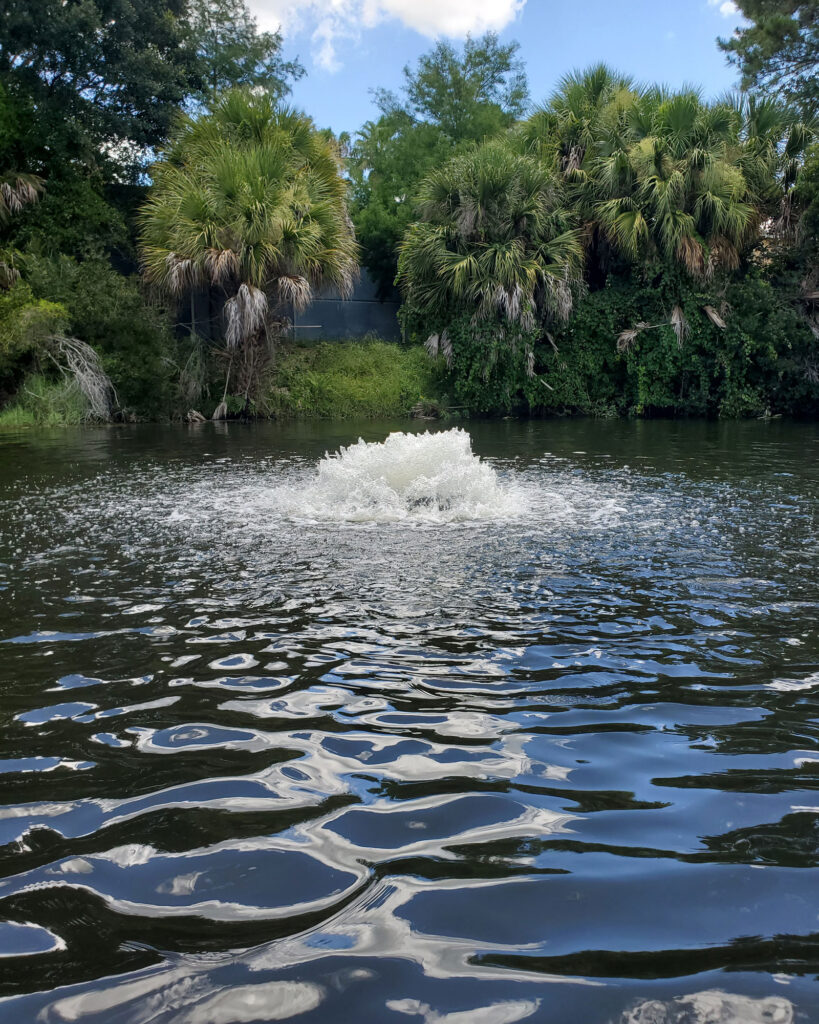
Stay ahead of water quality issues with proactive solutions
The best way to stay ahead of pond algae growth is by maintaining balanced water quality. By implementing preventive measures and sustainable practices, you can reduce the likelihood of water quality issues from developing. Shoreline management, nutrient mitigation, fountains and aeration, and ongoing water quality monitoring can help you cultivate a healthy, beautiful, functional waterbody – and enjoy it for as long as possible.
SOLitude Lake Management is an environmental firm committed to providing full-service solutions that improve water quality, preserve natural resources, and reduce our environmental footprint. Our services include lake, pond, wetland and fisheries management programs, algae and aquatic weed control, mechanical harvesting, hydro-raking, installation and maintenance of fountains and aeration systems, water quality testing and restoration, bathymetry, lake vegetation studies, biological assessments, habitat assessments, invasive species management and nuisance wildlife management. Services, consulting and aquatic products are available to clients nationwide, including homeowners associations, multi-family and apartment communities, golf courses, commercial developments, ranches, private landowners, reservoirs, recreational and public lakes, municipalities, parks, and state and federal agencies. Learn more about SOLitude Lake Management and purchase products at www.solitudelakemanagement.com

